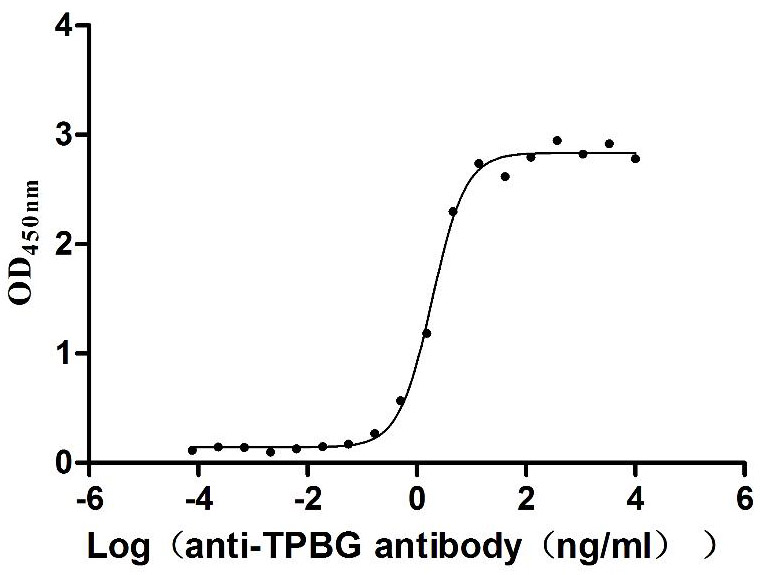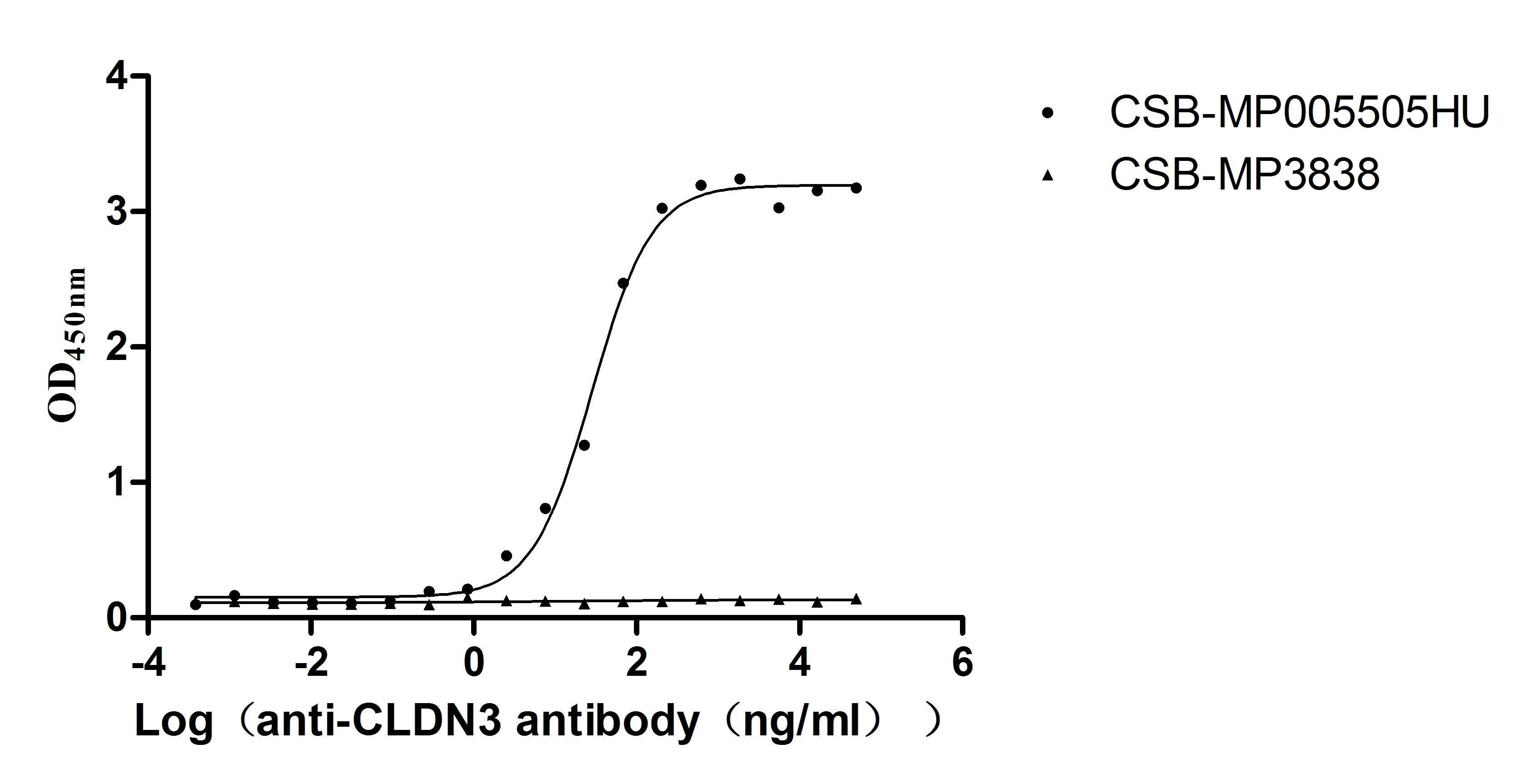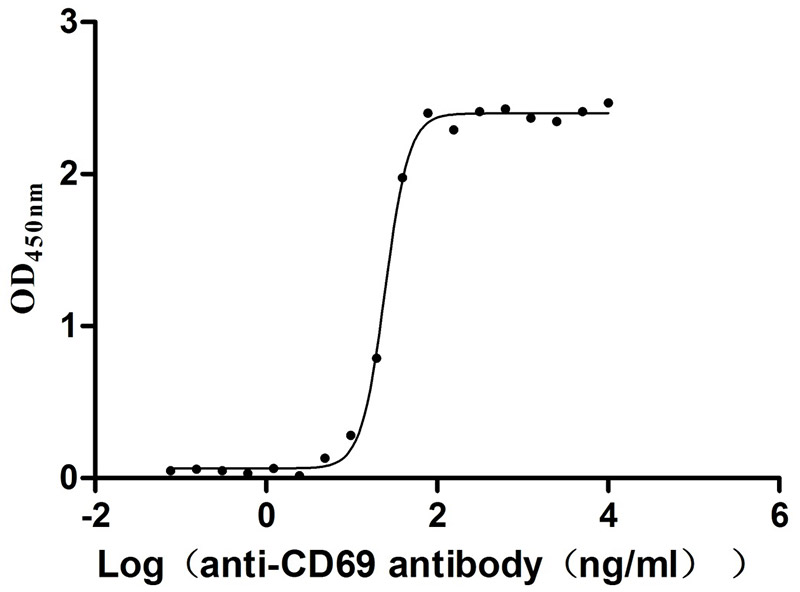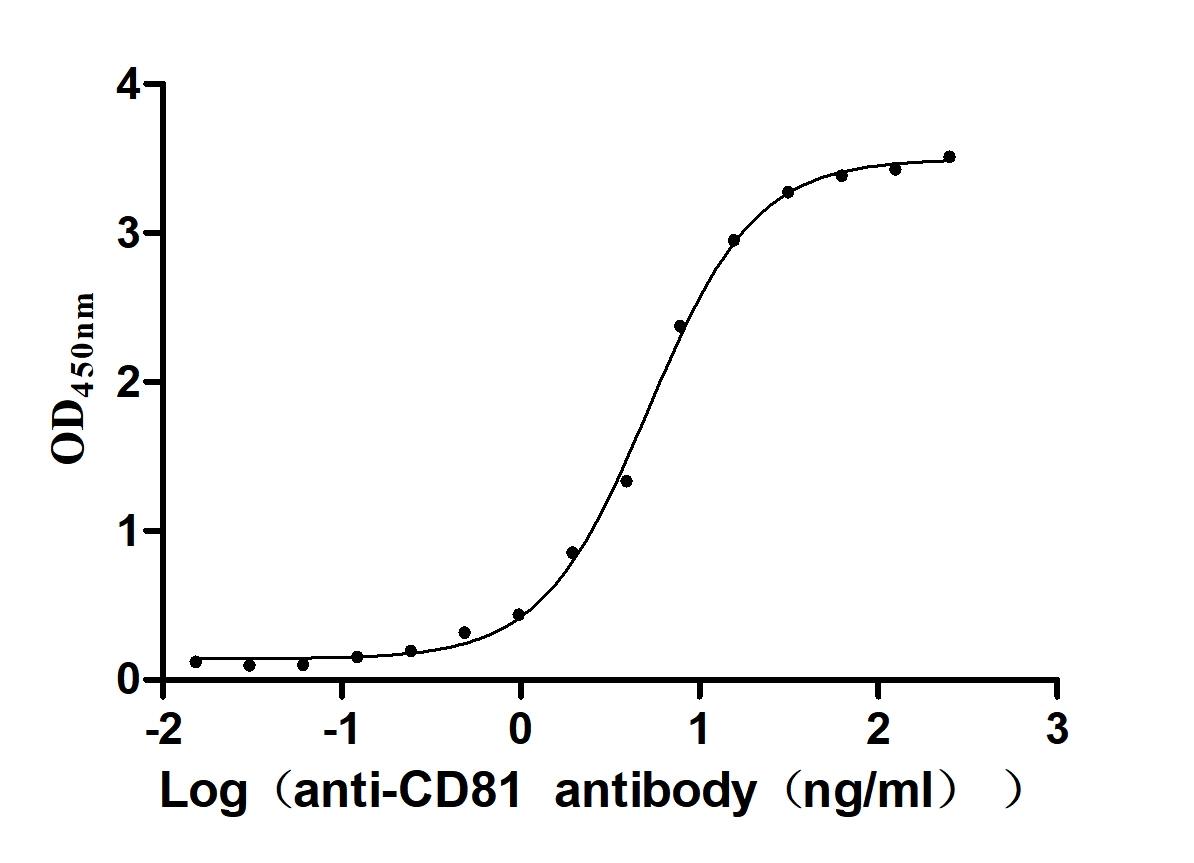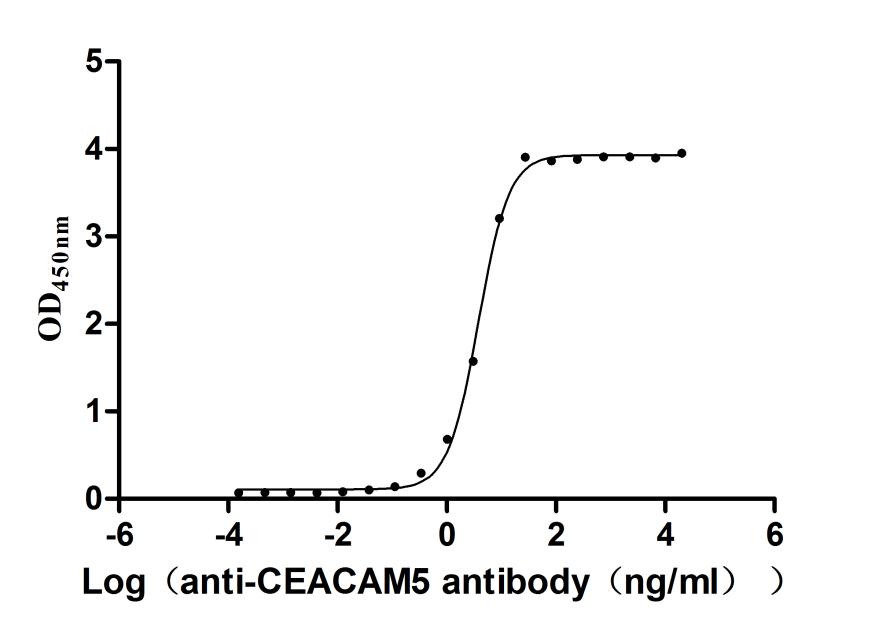Recombinant Mouse Non-specific lipid-transfer protein (Scp2)
-
中文名稱(chēng):小鼠Scp2重組蛋白
-
貨號(hào):020856MO
-
規(guī)格:
-
其他:
產(chǎn)品詳情
-
Uniprot No.:
-
基因名:
-
別名:Scp2; Scp-2; Non-specific lipid-transfer protein; NSL-TP; EC 2.3.1.176; Propanoyl-CoA C-acyltransferase; SCP-chi; SCPX; Sterol carrier protein 2; SCP-2; Sterol carrier protein X; SCP-X
-
免疫原種屬:Mus musculus (Mouse)
-
濃度:It differs from different batches. Please contact us to confirm it.
-
保存緩沖液:Lyophilized from Tris/PBS-based buffer, 6% Trehalose, pH 8.0
-
應(yīng)用說(shuō)明:Repeated freezing and thawing is not recommended. Store working aliquots at 4°C for up to one week.
-
儲(chǔ)存條件:The shelf life is related to many factors, storage state, buffer ingredients, storage temperature and the stability of the protein itself.
Generally, the shelf life of liquid form is 6 months at -20°C/-80°C. The shelf life of lyophilized form is 12 months at -20°C/-80°C. -
貨期:Basically, we can dispatch the products out in 1-3 working days after receiving your orders. Delivery time maybe differs from different purchasing way or location, please kindly consult your local distributors for specific delivery time.
-
用途:For Research Use Only. Not for use in diagnostic or therapeutic procedures.
靶點(diǎn)詳情
-
功能:Plays a crucial role in the peroxisomal oxidation of branched-chain fatty acids. Catalyzes the last step of the peroxisomal beta-oxidation of branched chain fatty acids and the side chain of the bile acid intermediates di- and trihydroxycoprostanic acids (DHCA and THCA). Also active with medium and long straight chain 3-oxoacyl-CoAs. Stimulates the microsomal conversion of 7-dehydrocholesterol to cholesterol and transfers phosphatidylcholine and 7-dehydrocholesterol between membrances, in vitro. Isoforms SCP2 and SCPx cooperate in peroxisomal oxidation of certain naturally occurring tetramethyl-branched fatty acyl-CoAs.; Mediates the transfer of all common phospholipids, cholesterol and gangliosides from the endoplasmic reticulum to the plasma membrane. May play a role in regulating steroidogenesis. Stimulates the microsomal conversion of 7-dehydrocholesterol to cholesterol. Also binds fatty acids and fatty acyl Coenzyme A (CoA) such as phytanoyl-CoA. Involved in the regulation phospholipid synthesis in endoplasmic reticulum enhancing the incorporation of exogenous fatty acid into glycerides. Seems to stimulate the rate-limiting step in phosphatidic acid formation mediated by GPAT3. Isoforms SCP2 and SCPx cooperate in peroxisomal oxidation of certain naturally occurring tetramethyl-branched fatty acyl-CoAs.
-
基因功能參考文獻(xiàn):
- Ablating both Fabp1 and Scp2/Scpx (TKO) induces hepatic phospholipid and cholesterol accumulation in high fat-fed mice PMID: 29307784
- role of Fabp1/Scp-2 in hepatic phytol metabolism PMID: 28411199
- Thus, the loss of Scp-2/Scp-x contributed to a sex-dependent hepatic accumulation of dietary phytol and BCFA. PMID: 29051070
- Individually ablating SCPx or SCP2/SCPx elicited concomitant upregulation of L-FABP. PMID: 27940000
- Lack of a significant decrease in the flux of HDL-[(3)H]CE to biliary FC or bile acids in FABP1(-/-) mice indicates the likely compensation of its function by an as yet unidentified mechanism. Taken together, these studies demonstrate that FABP1 and SCP2 facilitate the preferential movement of HDL-CEs to bile for final elimination PMID: 27381048
- Sterol Carrier Protein-2, a Nonspecific Lipid-Transfer Protein, in Intracellular Cholesterol Trafficking in Testicular Leydig Cells PMID: 26901662
- L-FABP was more important in hepatic retention of bile acids, while SCP-2/SCP-x more broadly affected biliary bile acid and phospholipid levels. PMID: 26541319
- Loss of L-FABP and SCP-2, or both induces hepatic lipid accumulation in female mice and mimics non-alcoholic fatty liver disease. PMID: 26116377
- SCP-2/SCP-x may function more in formation and biliary secretion of bile acid, with less impact on hepatic uptake or biliary secretion of HDL-cholesterol PMID: 25277800
- liver fatty acid-binding protein, the single most prevalent hepatic cytosolic protein that binds cholesterol, was upregulated twofold in SCP-2 null hepatocytes PMID: 22241858
- SCP-2 expression plays a significant role in HDL-mediated cholesterol efflux by regulating the size of rapid vs. slow cholesterol efflux pools and/or eliciting concomitant upregulation of L-FABP in cultured primary hepatocytes. PMID: 20395534
- Effect of Scp2 expression on the rate of sterol transfer from lysosomal membranes, and lysosomal membrane lipid distribution. PMID: 12093533
- Data show that expression of sterol carrier protein-2 (SCP-2) increased fatty acid uptake and targeted fatty acid to unique lipid pools, suggesting that SCP-2 may effectively serve as universal fatty acid binding and trafficking protein. PMID: 12479573
- Results suggest a key regulatory role for sterol carrier protein-2 in hepatic lipid metabolism. PMID: 12576522
- SCP-2 contributes to the accumulation of cholesterol in L-FABP null liver PMID: 12670956
- SCP-2 and SCP-x stimulate oxidation and esterification of branched-chain as well as straight-chain fatty acids in intact cells. PMID: 12810824
- Results demonstrate a direct physiological relationship between lack of SCP-x and decreased ability to metabolize branched-chain lipids. PMID: 17068117
- Regulation of the SCPx gene by SF-1 and cAMP is similar to the regulatory mechanisms observed for other steroidogenic genes. PMID: 17434450
- SCP-2/SCP-x has a role in regulating lipid raft domains in primary cultured mouse hepatocytes PMID: 17609524
- Results support an important role for SCP-2 in hepatic cholesterol homeostasis. PMID: 19289417
顯示更多
收起更多
-
亞細(xì)胞定位:[Isoform SCP2]: Cytoplasm. Peroxisome. Endoplasmic reticulum. Mitochondrion.; [Isoform SCPx]: Peroxisome.
-
蛋白家族:Thiolase family
-
組織特異性:Present at low levels in all tissues examined but expressed predominantly in the liver.; [Isoform SCPx]: In testis, highly expressed in the interstitial connective tissue, an area rich in interstitial cells of Leydig, but it is barely expressed in the ger
-
數(shù)據(jù)庫(kù)鏈接:
Most popular with customers
-
Recombinant Human Pancreatic adenocarcinoma up-regulated factor (ZG16B) (Active)
Express system: Mammalian cell
Species: Homo sapiens (Human)
-
Recombinant Human Claudin-6 (CLDN6)-VLPs (Active)
Express system: Mammalian cell
Species: Homo sapiens (Human)
-
Recombinant Macaca fascicularis Trophoblast glycoprotein (TPBG), partial (Active)
Express system: Mammalian cell
Species: Macaca fascicularis (Crab-eating macaque) (Cynomolgus monkey)
-
Recombinant Human Claudin-3 (CLDN3)-VLPs (Active)
Express system: Mammalian cell
Species: Homo sapiens (Human)
-
Recombinant Human Early activation antigen CD69 (CD69), partial (Active)
Express system: Mammalian cell
Species: Homo sapiens (Human)
-
Recombinant Human CD81 antigen (CD81), partial (Active)
Express system: Mammalian cell
Species: Homo sapiens (Human)
-
Recombinant Human Myosin regulatory light chain 12B (MYL12B) (Active)
Express system: E.coli
Species: Homo sapiens (Human)
-
Express system: Mammalian cell
Species: Macaca mulatta (Rhesus macaque)


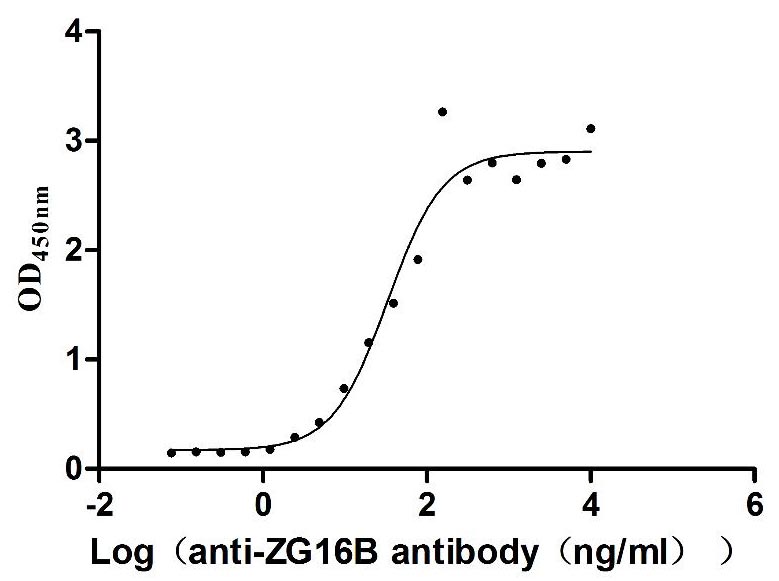
-AC1.jpg)
